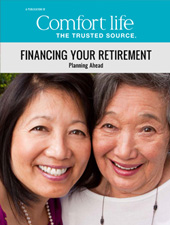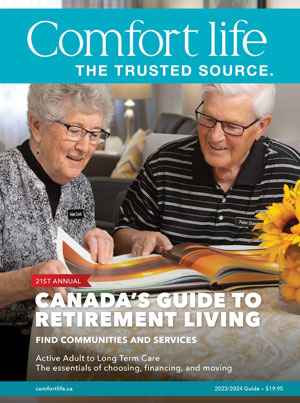Lists of reports on this page:
Find care details, insights, and insider perspectives gained from 20+ years of helping seniors and families.
What to know about this topic:
- Remaining at home provides many benefits to seniors
- How to make aging in place work
- Aging at home is a decision
Remaining at home provides many benefits to seniors
There are many benefits to aging at home but listing them helps seniors and family members understand the issue as fully as possible. Some of the positives for the aging relative include:
- Maintained privacy
- Living in a place you are familiar with
- Living where you feel secure
- Access to activities you enjoy
- Closeness to a place of worship you are familiar with
- Avoid the hassle of selling a home and paying rent, lease or condo fees
Some things that will need to be considered in order to successfully facilitate a senior’s continued living at home:
- safe maintenance of finances including bank accounts and credit cards (e.g. do you know how to avoid scams?)
- housecleaning and home maintenance, including lawn care, driveway and sidewalk maintenance, snow and ice removal
- help with medical or other appointments, especially transportation
IN-DEPTH REPORTSHome care companies
In-Home Assisted Living Inc.
In-Home Assisted Living offers caregivers and nurses to help seniors and people with medical challenges to remain living in their own home with safety and comfort. Also ask about our hospital bedside support.
Lifestyle Options: Respite care, Assisted Living, Memory Care, Long-term care, Home Care
Nurse For Care
Nurse for All offers medical and non-medical care support for people of all ages & needs in the GTA, Ontario, Alberta, BC, Nova Scotia at home, hospital, retirement home or long-term care facility.
Lifestyle Options: Respite care, Assisted Living, Memory Care, Long-term care, Home Care
Richmond Heights Health Clinic and Home Care
Richmond Heights Health Clinic & Home Care, provides compassionate 24 hour personalized senior care services with bonded, registered & licensed Nurses / RPN's, in your home, hospital, rehab, LTC & retirement communities.
Lifestyle Options: Respite care, Assisted Living, Memory Care, Long-term care, Home Care
Take It Easy Care Inc.
Our clients are at the heart of everything we do. We believe in tailoring our services to meet their unique needs, recognizing that no two individuals are the same. Whether it's medical care, companionship, or assistance
Lifestyle Options: Respite care, Assisted Living, Memory Care, Home Care
How to make aging in place work
Aging in place can work well if there is an appropriate amount of thought put into it. One of the first concerns should be making the home safe. There are many considerations in home safety so that seniors can safely age in the home. Some things to consider:
- Step repair: make sure that all steps outside and inside the home are safe and in good repair.
- Unnecessary carpeting: old or flimsy carpeting can result in unnecessary falls. Carpets with frayed edges or holes need to be removed and all mats or area carpets need to be checked for slip proofing. It may be smartest and safest to simply remove them.
- Check well-traveled pathways within the home for unneeded sharp edges or other hazards that can cause injury.
- Install rails and other home safety and assisted living devices to ensure that your senior’s home is optimally safe.
- Be sure to winter-proof all sidewalks, steps and railings outside the home.
- Purchase and use a medical alarm.
- Modify the home as much as possible to remove unnecessary stairs and other unneeded hazards.
- Of course, if a senior requires a wheelchair their home must be modified to make it wheelchair safe and friendly, in order for them to continue aging at home.
Falls are the number one cause of seniors needing to move out of their own homes and into a retirement home. Providing optimal safety measures to prevent falls before they have a chance of happening can go a long way toward extending a senior’s ability to keep on living in their own home.
Consider walking distances to local shopping and public transportation and reduce risks associated with driving.
Aging at home is a decision
Aging in place should be a formal decision rather than just aging at home because that’s where you’ve always been. The decision process should include as many affected people as possible and changes need to be considered in order to make it work. If you are part of the decision-making process, examine realistically the facts about aging in place and whether it is true for you that aging at home is better than a retirement home.
The decision process should also include a list of pros and cons. But go beyond practical considerations and listen to input from friends and family concerning your personality and other factors about you or your situation that you might not consider or may not like to admit. Input from a trusted pastor or rabbi or any other such authority figure might also be helpful. Putting a plan in place helps to objectify whether or not it is really a good decision to remain at home or consider alternatives. A list and plan helps family members and others understand the issues and needs of the elder wishing to age at home.
The plan should include making the home as safe as possible. Make sure that you fully understand all home health care services available to you then optimize your use of these services so that you get the best value for your dollar. A mix of community services and services provided by private health care providers can help you achieve a great experience aging at home, staying in the house and the neighbourhood that you love.




